A couple of office buildings have moved one step closer towards their residential conversion centered around LaSalle Street in The Loop. With rising vacancy rates across the city’s central business district, more and more office structures are making the switch to residential.
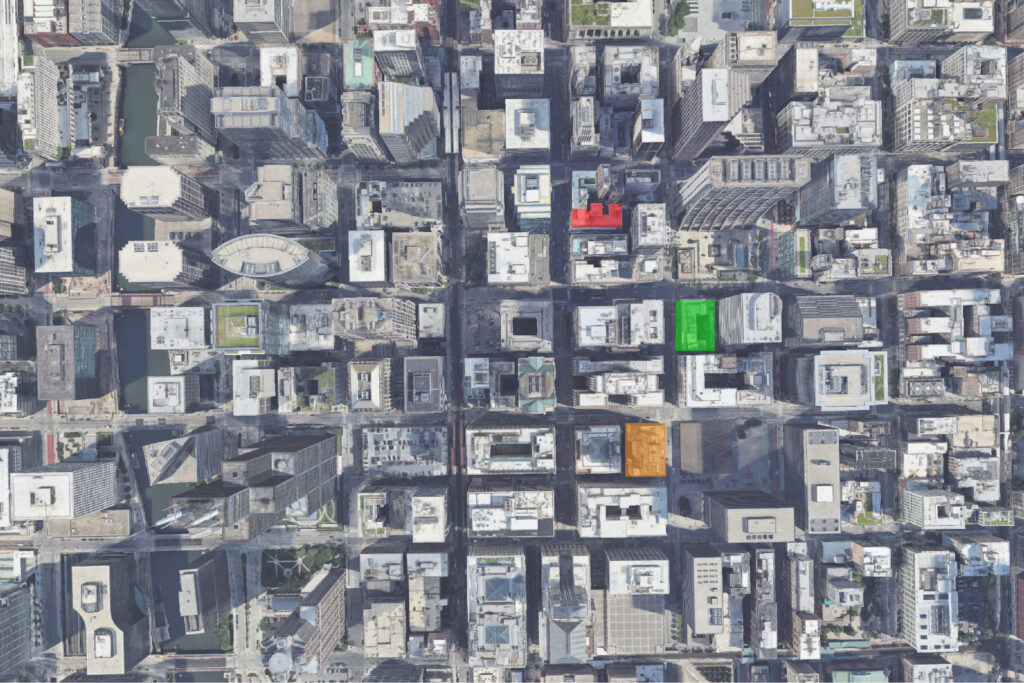
79 W Monroe Street (green) – 19 S LaSalle Street (red) – 105 W Adams Street (orange) via Google Maps
Now, one building has received approval from the Finance Committee for its LaSalle Street Reimagine funds, while another two have been purchased by developers with plans for a conversion. They are as follows:
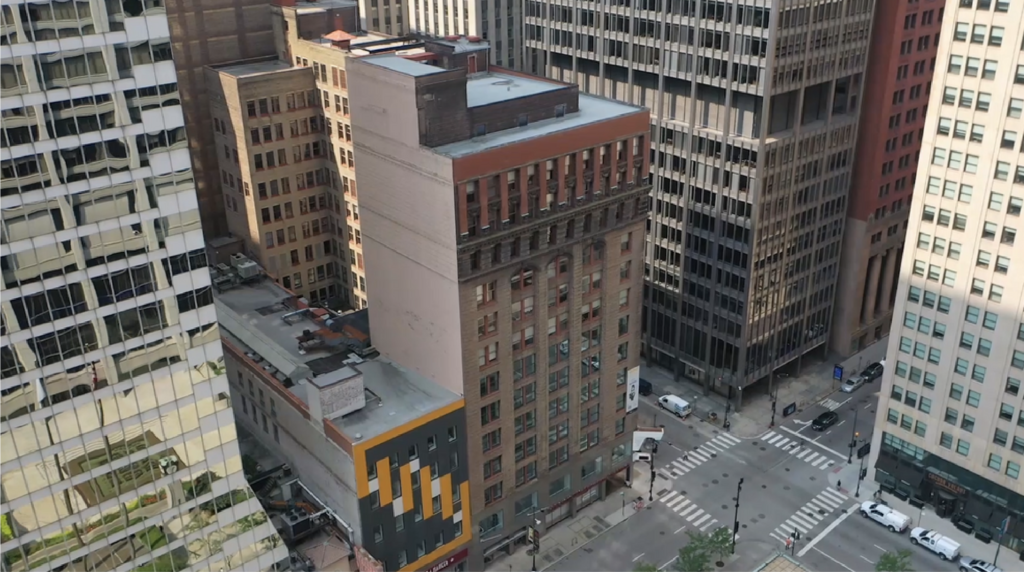
Current image of 79 W Monroe Street via LoopNet
Rising 14-stories tall and sitting on the corner with S Clark Street, the $64 million conversion is the first of four LaSalle Street Reimagine projects to receive approval from the city’s Finance Committee. Developer R2 Companies is working with Ware Malcomb on the design of 117-residential units made up of studios, one-, and two-bedroom layouts.
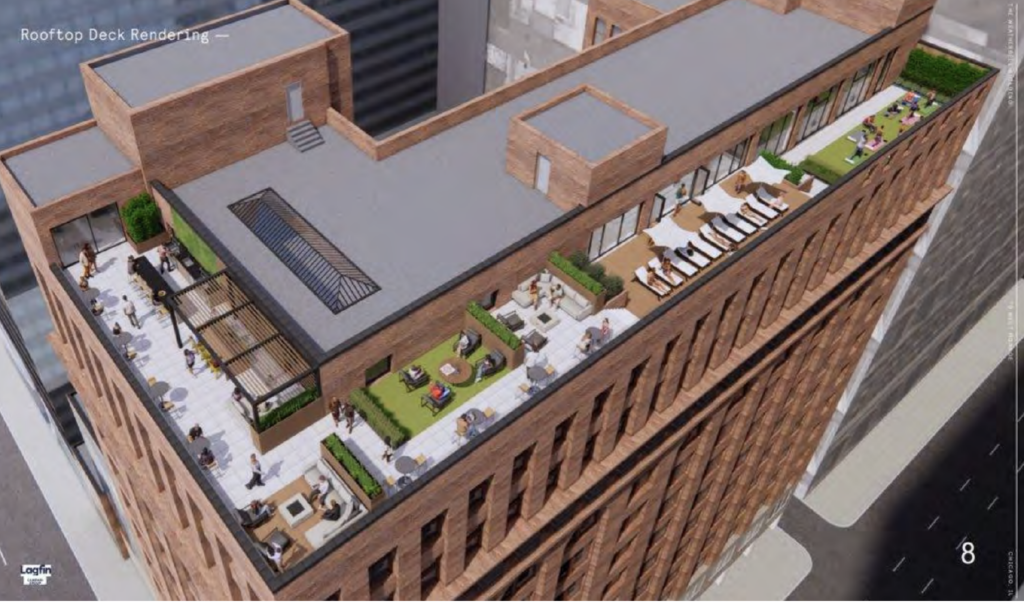
Rendering of 79 W Monroe Street by Ware Malcomb
The project would receive $28 million in TIF money once fully approved. As part of the city’s requirement for this, 30-percent of the total units will be considered affordable. The project will keep the ground floor Walgreens and existing school in the lower levels. However it will add new amenity spaces and a rooftop on the 14th floor.
While it still requires City Council approval, the rest of funding will come from $28.3 million in equity from the Campari Group and $7.8 million in historic tax credits. Construction will commence at the start of 2025 and finish early 2026.
– –
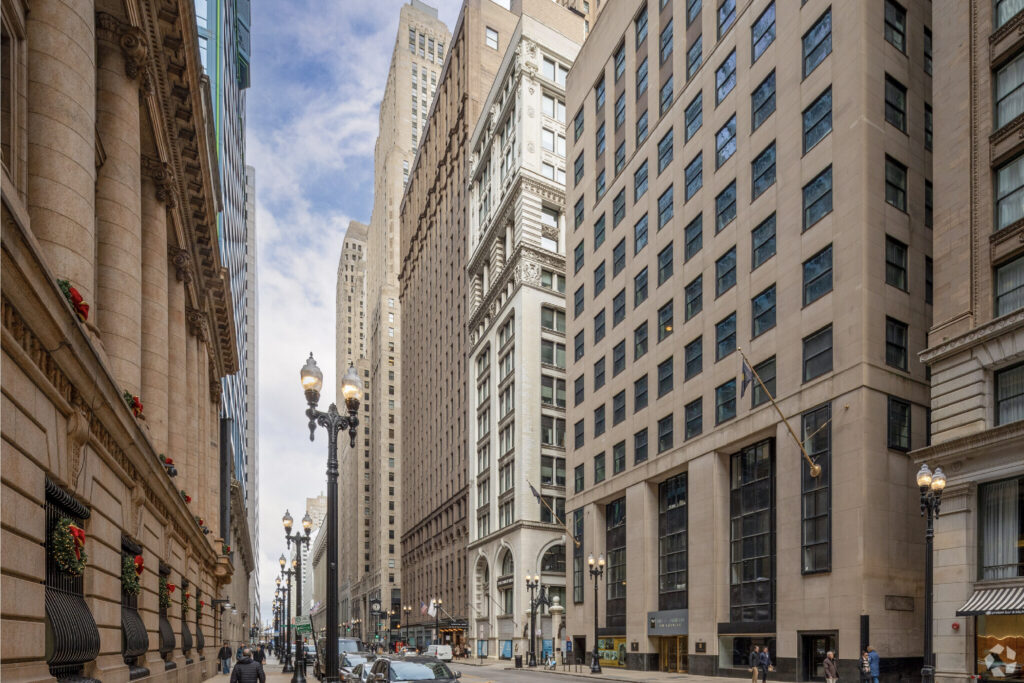
View of 19 S LaSalle Street via LoopNet
19 S LaSalle Street
Rising 16-stories and built in 1893, the 159,000 square-foot tower was just purchased by a partnership between Igor Gabal and Envoi Partners. The structure is currently 30 percent leased and the team paid $4.6 million for the building compared to its last owners who paid $22 million in 2019.
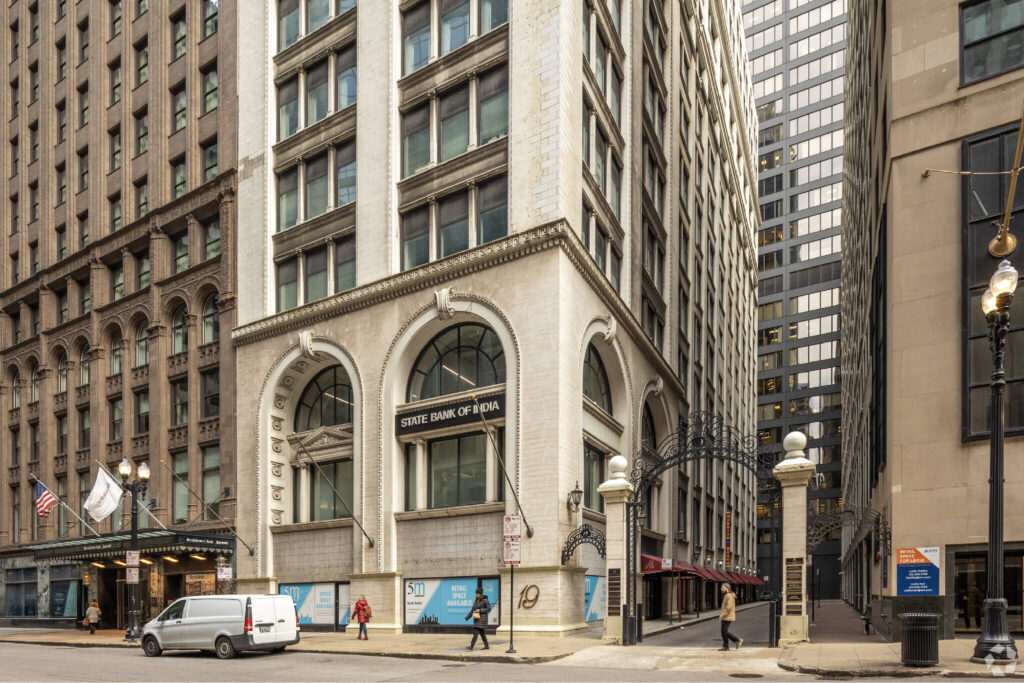
View of 19 S LaSalle Street via LoopNet
While plans have not been drawn yet, Gabal hopes to fit anywhere from 150 to 170 residential units within the building, with a potential retail space on the ground floor. This conversion would cost around $50 million according to Crain’s, for which the developers hope they can apply to city funding as they progress. Currently no timeline is known.
– –
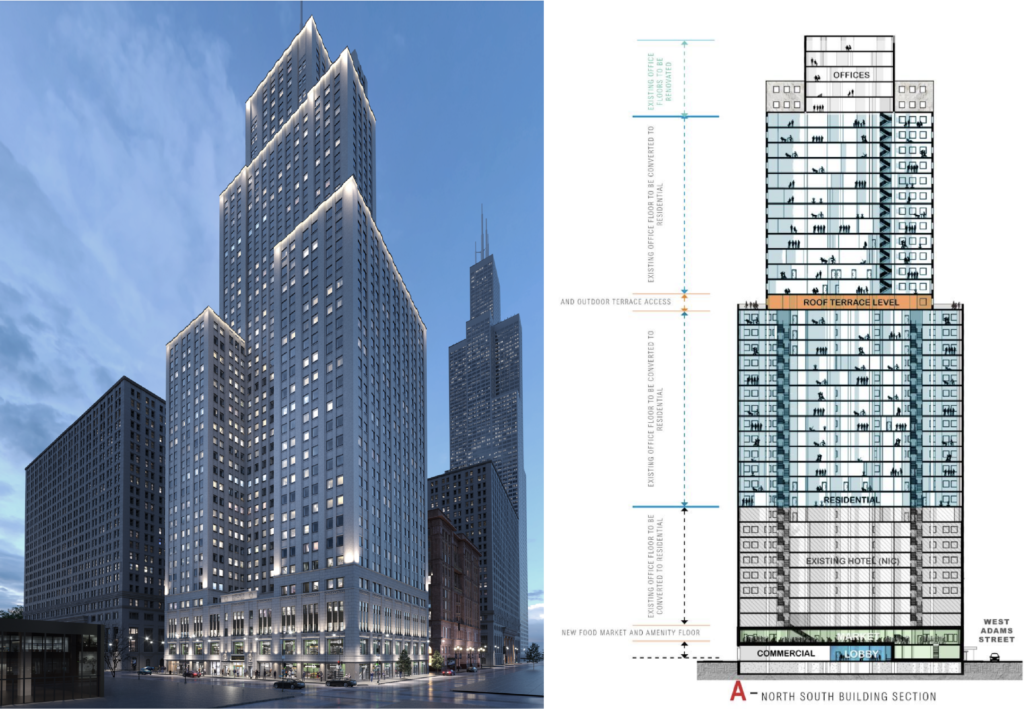
PREVIOUS rendering and section of 105 W Adams Street Proposal 2 by DesignBridge
The 41-story Art Deco structure behind the Federal Center was one of the original LaSalle Street Reimagined proposals, however it did not move forward as one of the four finalists earlier this year. Now a new set of owners made up of Primera Group and Marc Calabria have purchased the office floors within the building for around $11 million.
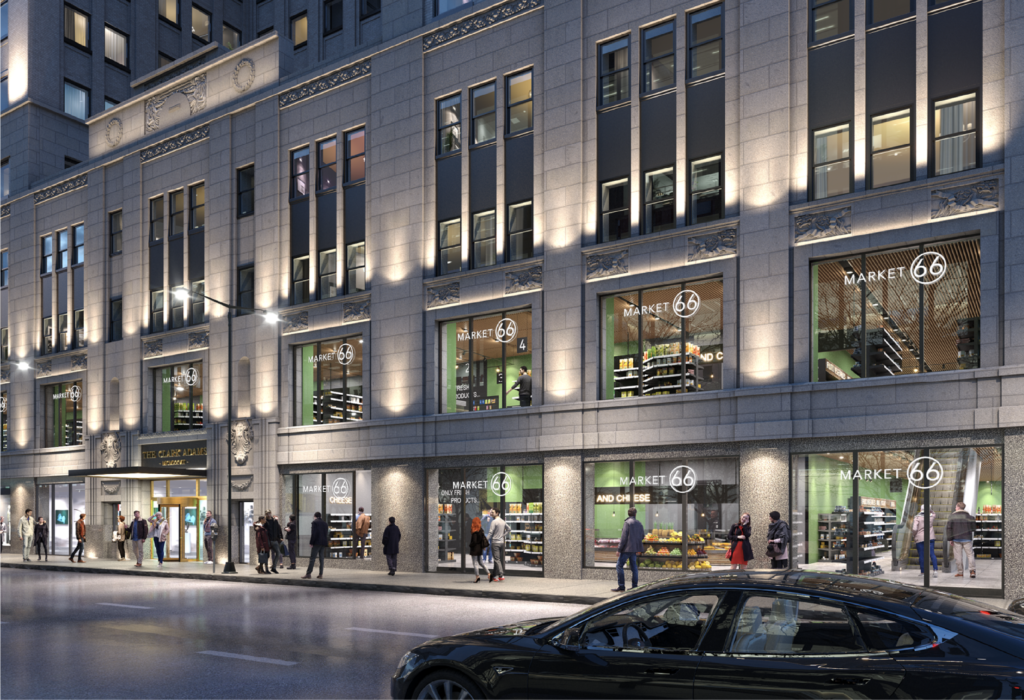
PREVIOUS rendering of 105 W Adams Street Proposal 2 by DesignBridge
While a hotel partially occupies the lower floors, the owners plan to continue efforts to redevelop roughly 300,000 square-feet of space across 30 of its floors. The team will now work on finalizing architectural plans which will most likely be similar to the original proposal with 247-units and a grocery store. With a rough cost of over $200 million, they hope to continue the past team’s effort for city funding as well.
– –
These projects as well as the other three LaSalle Street Reimagined projects and the conversions of 65 E Wacker Place and 500 N Michigan Avenue will add around 2,000 units in total to downtown. Coupled with the redevelopment of the Thompson Center into Google’s new home, the city is hoping for a revitalization of its center.
Subscribe to YIMBY’s daily e-mail
Follow YIMBYgram for real-time photo updates
Like YIMBY on Facebook
Follow YIMBY’s Twitter for the latest in YIMBYnews

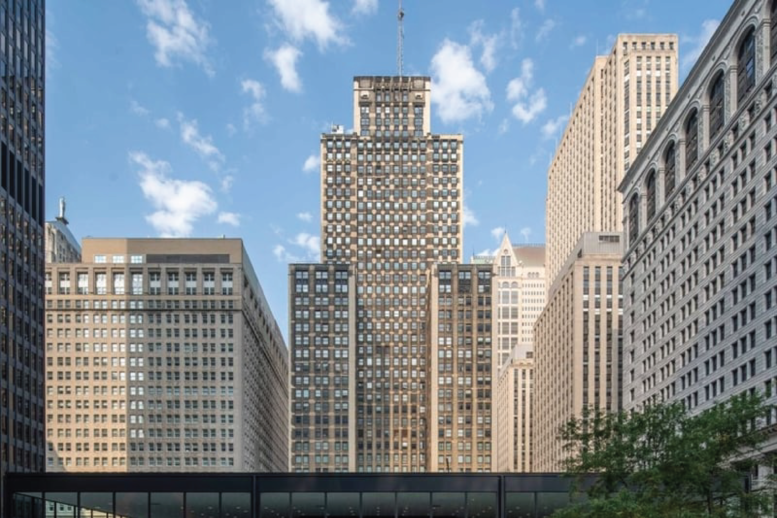
This stuff moves so slow. Can’t wait to see what the area look like in 5-10 years.
Very excited to see the Loop become a robust mixed use neighborhood. The last rendering, which includes a grocery store, is a very exciting and livable vision.
Maybe one day we’ll no longer refer to it as a central business district and instead just call it the city center like non-US cities tend to do. That would be a mark of success of achieving a less fragile place.
I can’t believe we still haven’t started any of these, but here’s to hoping 2025 starts converting some of these. It would be great if in a few years, thousands of new apartments are added, while reducing the vacancy of office buildings to 10 to 15%. Hopefully by then, new office buildings will start to be built again in different areas of the city. Maybe it’ll make the Loop and other areas more 24/7 liveable, walkable, fun areas.
Jacob notes this stuff moves slowly. Big part of the reason: the city insists on being involved, and demanding subsidized units. Those subsidized “affordable” units cost the city a fortune – subsidies have been running about $600k per affordable unit. And those units remain in private ownership, and their rents go to private owners.
And the city’s involvement guarantees delays, too. Slow decision making while dangling huge sums in front of building owners, who are willing to wait to lay hands on the nearly free money from the city.
It’s a gross dereliction of politicians’ duty to make public money buy public goods at reasonable cost.
These are also just very complicated projects. Existing leases to negotiate, complicated financing, very complicated engineering and architectural work, a challenging neighborhood in which to do construction, and historic structures all add to the City’s regulatory delays. While the City certainly doesn’t speed things along, it’s not entirely on them.
Get a job and live where you can afford to life – I don’t expect you all to be paying for my home – cable -internet – phone – etc. etc. etc.
That sentiment forces service workers to commute an hour or more daily because living costs don’t allow them to live near their work. Tens of thousands of workers keep our cities moving, and most of these positions are held by people who don’t live in Chicago or Illinois.
All across the US, service industry workers have to face the reality that living near their place of employment is not a luxury they can afford. And that sucks.
Mentally, this is not sustainable. The toll of commuting, the high cost of travel because most enclaves of affordable housing aren’t served by transit, and the snobbery of white-collar vs. blue-collar sentiment build.
This comment is quite righteous and ignores the reality that builds upon heavy inequality.
Looking into the fairness of society, it’s not fair to ask everyone to carry the burden of public housing. It’s unfair to have your golden ticket be paid for by those who have put in the effort to get a good-paying job and have done all the right things in life. It’s almost like a punishment for being a productive member of society. But we shouldn’t keep up this idea that you can only live where you can afford. It sounds selfish, but we have found ways to allow mixed-income housing in areas of high desirability. “Get a job where you can afford to live” is a sentiment of giving up, and I don’t believe that’s a valid option.
My background is in architecture and urban planning. I don’t have the answers to how we make the numbers work. I am not the one managing the delicate balance of financials. I am not the far-left politician making disastrous promises with no means of achieving them without exploitive taxes. All I have is my background in research and the ability to see what does and doesn’t work. That being said, these developments should strive to make a healthy community possible. Developers should want to see our city evolve for the better. The Loop isn’t Oak Park or Hinsdale. This isn’t trying to push affordability in Glencoe or Beverly Hills. We are making mixed income in places that make sense. Job centers are one of the strongest examples of where we should pursue this equality agenda.
The crazy thing is that 500-100 additional units may be enough to revitalize that area. You move in 1000 people or so and all of a sudden there’s more normal people in the streets (especially during weekends and night), more shops will come in and all of a sudden it feels safer.
State Street and S Wabash also needs some kind of innovation project. These two areas are becoming no go zones.
Westlooper anyone who lives in the mixed use buildings has to have a job so your comment is ignorant and invalid!